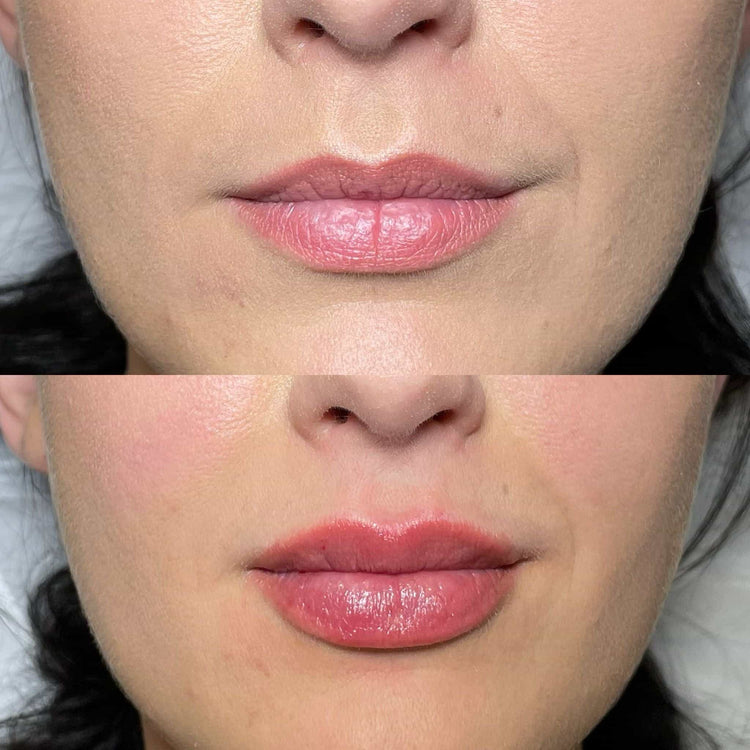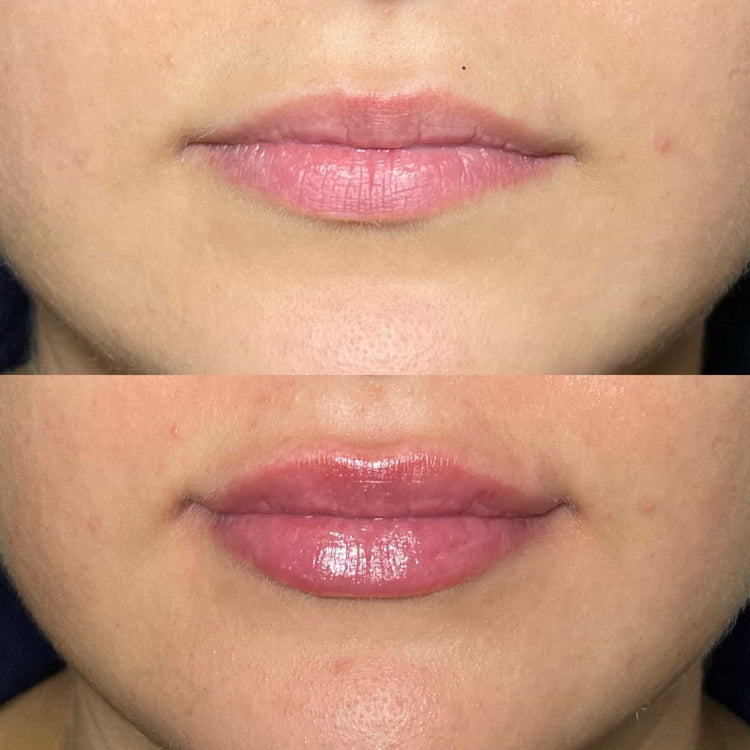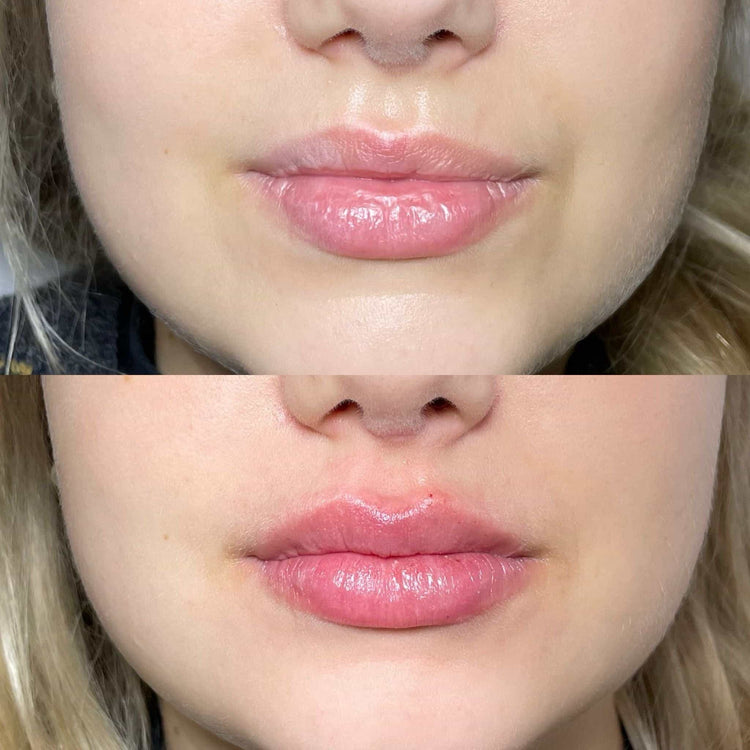Factors Affecting Filler Longevity
Determining how long lip fillers will last is complex, as several factors influence their longevity.
Dermal Filler Type
Dermal filler longevity varies depending on a number of individual and product-specific factors. The type of dermal filler used plays a significant role. Hyaluronic acid (HA) fillers, which are the most common type, tend to last for 6 to 18 months, though some newer formulas may offer longer-lasting results. Other types of fillers, such as poly-L-lactic acid (PLLA), stimulate collagen production and can last up to 2 years or more.
Lifestyle Habits
Determining how long lip fillers will last is complex, as several factors influence their longevity.
Dermal filler longevity varies depending on a number of individual and product-specific factors. The type of dermal filler used plays a significant role. Hyaluronic acid (HA) fillers, which are the most common type, tend to last for 6 to 18 months, though some newer formulas may offer longer-lasting results. Other types of fillers, such as poly-L-lactic acid (PLLA), stimulate collagen production and can last up to 2 years or more.
Lifestyle habits also impact how long your lip filler results will last.
- Smoking can degrade the hyaluronic acid in fillers, leading to shorter longevity.
- Excessive sun exposure can also break down filler molecules, reducing their effectiveness.
- Drinking lots of alcohol can dehydrate your body and skin, making fillers appear less plump.
Individual Metabolism
Individual metabolism plays a crucial role in how long lip fillers last. People who metabolize hyaluronic acid more quickly may see their filler results fade sooner than those with slower metabolisms.
The injection technique and the amount of filler used also influence longevity.
Average Lifespan of Lip Fillers
Determining how long lip fillers will last is complex, as several factors influence their longevity. Dermal filler longevity varies depending on a number of individual and product-specific factors. The type of dermal filler used plays a significant role. Hyaluronic acid (HA) fillers, which are the most common type, tend to last for 6 to 18 months, though some newer formulas may offer longer-lasting results. Other types of fillers, such as poly-L-lactic acid (PLLA), stimulate collagen production and can last up to 2 years or more.
Mild Enhancement
Determining how long lip fillers will last is complex, as several factors influence their longevity.
Dermal filler longevity varies depending on a number of individual and product-specific factors. The type of dermal filler used plays a significant role. Hyaluronic acid (HA) fillers, which are the most common type for mild enhancements, tend to last for 6 to 18 months. Some newer HA formulas may offer longer-lasting results.
Lifestyle habits also impact how long your lip filler results will last. Smoking can degrade the hyaluronic acid in fillers, leading to shorter longevity. Excessive sun exposure can also break down filler molecules, reducing their effectiveness. Drinking lots of alcohol can dehydrate your body and skin, making fillers appear less plump.
Individual metabolism plays a crucial role in how long lip fillers last. People who metabolize hyaluronic acid more quickly may see their filler results fade sooner than those with slower metabolisms.

The injection technique and the amount of filler used also influence longevity.
Significant Volume Increase
Determining how long lip fillers will last is complex, as several factors influence their longevity.
Dermal filler longevity varies depending on a number of individual and product-specific factors. The type of dermal filler used plays a significant role. Hyaluronic acid (HA) fillers, which are the most common type for mild enhancements, tend to last for 6 to 18 months. Some newer HA formulas may offer longer-lasting results.
Other types of fillers, such as poly-L-lactic acid (PLLA), stimulate collagen production and can last up to 2 years or more.
Lifestyle habits also impact how long your lip filler results will last. Smoking can degrade the hyaluronic acid in fillers, leading to shorter longevity. Excessive sun exposure can also break down filler molecules, reducing their effectiveness. Drinking lots of alcohol can dehydrate your body and skin, making fillers appear less plump.
Individual metabolism plays a crucial role in how long lip fillers last. People who metabolize hyaluronic acid more quickly may see their filler results fade sooner than those with slower metabolisms.
The injection technique and the amount of filler used also influence longevity. A skilled injector will strategically place the filler to maximize its volume and longevity.
Boosting Filler Duration
Determining the longevity of lip fillers is a multifaceted process influenced by various factors specific to both the individual and the chosen product.
Topical Treatments
Determining how long lip fillers last is complex, as several factors influence their longevity.
Dermal filler longevity varies depending on a number of individual and product-specific factors. The type of dermal filler used plays a significant role. Hyaluronic acid (HA) fillers, which are the most common type for mild enhancements, tend to last for 6 to 18 months. Some newer HA formulas may offer longer-lasting results.
Other types of fillers, such as poly-L-lactic acid (PLLA), stimulate collagen production and can last up to 2 years or more.
Lifestyle habits also impact how long your lip filler results will last. Smoking can degrade the hyaluronic acid in fillers, leading to shorter longevity. Excessive sun exposure can also break down filler molecules, reducing their effectiveness. Drinking lots of alcohol can dehydrate your body and skin, making fillers appear less plump.

Individual metabolism plays a crucial role in how long lip fillers last. People who metabolize hyaluronic acid more quickly may see their filler results fade sooner than those with slower metabolisms.
The injection technique and the amount of filler used also influence longevity. A skilled injector will strategically place the filler to maximize its volume and longevity.
Determining the longevity of lip fillers is a multifaceted process influenced by various factors specific to both the individual and the chosen product.
Regular Touch-Ups
Boosting filler duration involves understanding the interplay between filler type, lifestyle choices, and individual metabolism. Choosing longer-lasting filler formulas, like PLLA, can extend results for up to two years or more.
Regular touch-ups are crucial to maintaining fullness and volume over time. These top-up appointments replenish lost product and ensure a consistently pleasing aesthetic.
The frequency of touch-ups depends on the type of filler used and individual factors like metabolism. For HA fillers, top-ups may be needed every 6 to 12 months, while PLLA may require less frequent maintenance.
Consulting with a qualified and experienced injector is essential for determining the optimal filler type, injection technique, and touch-up schedule tailored to your specific needs and goals.
Maintenance and Aftercare Tips
Determining how long lip fillers will last is complex, as several factors influence their longevity. Dermal filler longevity varies depending on a number of individual and product-specific factors. The type of dermal filler used plays a significant role. Hyaluronic acid (HA) fillers, which are the most common type for mild enhancements, tend to last for 6 to 18 months. Some newer HA formulas may offer longer-lasting results. Other types of fillers, such as poly-L-lactic acid (PLLA), stimulate collagen production and can last up to 2 years or more.
Injection Site Care
Maintaining your lip filler results involves a combination of aftercare practices and regular touch-ups.
After injection, it’s important to avoid touching or rubbing the treated area. Applying ice packs for 15 minutes at a time can help reduce swelling and bruising.
Avoid strenuous activities and excessive heat exposure, as these can affect healing and filler longevity.
For optimal results, it’s crucial to keep your lips hydrated by applying lip balm regularly.
Sun Protection
Boosting filler duration involves understanding the interplay between filler type, lifestyle choices, and individual metabolism. Choosing longer-lasting filler formulas, like PLLA, can extend results for up to two years or more.

Regular touch-ups are crucial to maintaining fullness and volume over time. These top-up appointments replenish lost product and ensure a consistently pleasing aesthetic.
The frequency of touch-ups depends on the type of filler used and individual factors like metabolism. For HA fillers, top-ups may be needed every 6 to 12 months, while PLLA may require less frequent maintenance.
Consulting with a qualified and experienced injector is essential for determining the optimal filler type, injection technique, and touch-up schedule tailored to your specific needs and goals.
Maintaining your lip filler results involves a combination of aftercare practices and regular touch-ups. After injection, it’s important to avoid touching or rubbing the treated area.
Applying ice packs for 15 minutes at a time can help reduce swelling and bruising. Avoid strenuous activities and excessive heat exposure, as these can affect healing and filler longevity. For optimal results, it’s crucial to keep your lips hydrated by applying lip balm regularly.
Sun protection is paramount for maintaining the longevity of lip fillers.
UV rays can break down hyaluronic acid, leading to premature fading of the filler.
Always wear a broad-spectrum sunscreen with an SPF of 30 or higher on your lips, even on cloudy days.
Reapply sunscreen every two hours, especially after swimming or sweating. You can also use a lip balm containing SPF for added protection.
Avoidance of Certain Products
To ensure your lip fillers last as long as possible, it’s important to avoid certain products and habits that can break down hyaluronic acid or affect the overall appearance of the filler.
One key thing to avoid is excessive sun exposure. UV rays can degrade hyaluronic acid, leading to premature fading of the filler.
Always wear a broad-spectrum sunscreen with an SPF of 30 or higher on your lips, even on cloudy days. Reapply sunscreen every two hours, especially after swimming or sweating. You can also use a lip balm containing SPF for added protection.
Another product to avoid is retinol and other strong exfoliating acids as they can cause thinning of the skin and potentially disrupt the filler placement.
Additionally, certain cosmetics, especially those with oil-based formulations, can interfere with the longevity of fillers by breaking down the hyaluronic acid. Opt for water-based makeup products whenever possible.
Learn about the lip filler process with Dr. Laura Geige at It’s Me & You Clinic
- How Long Does Filler In Marionette Lines Take To Settle? - August 14, 2025
- How Long Do Lip Fillers Last? A Guide For UK Patients - August 13, 2025
- How Kratom Gold Shots Support A Holistic Lifestyle - August 7, 2025
